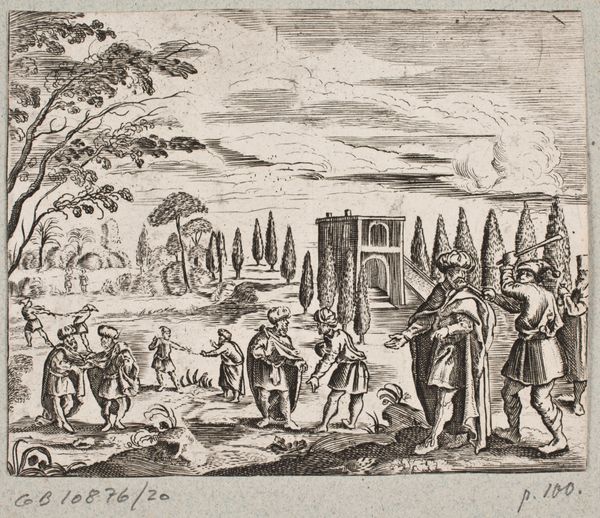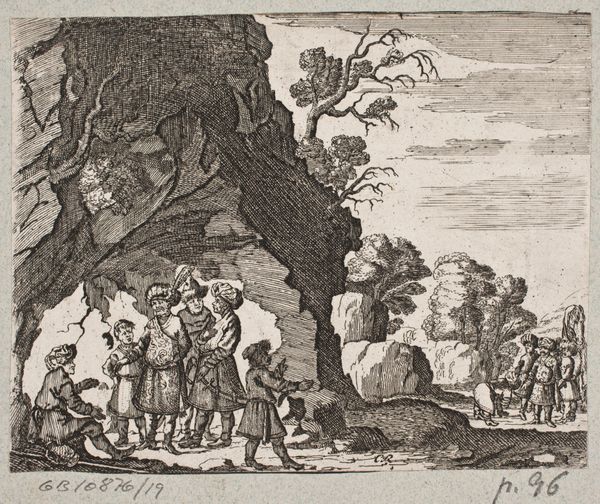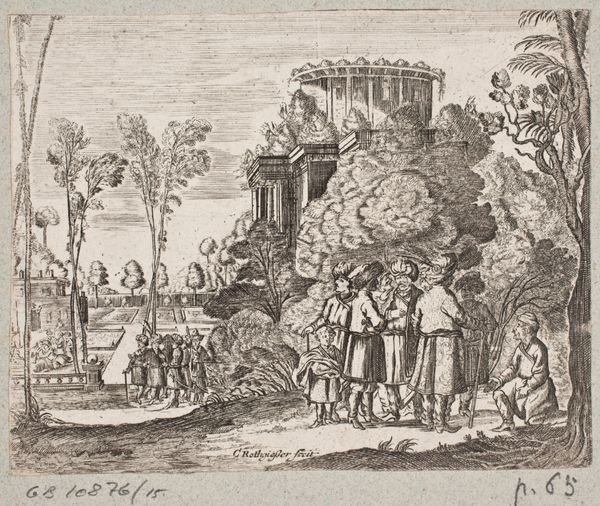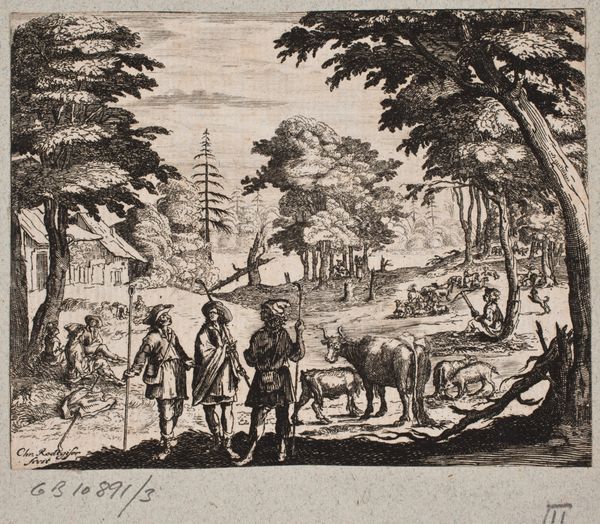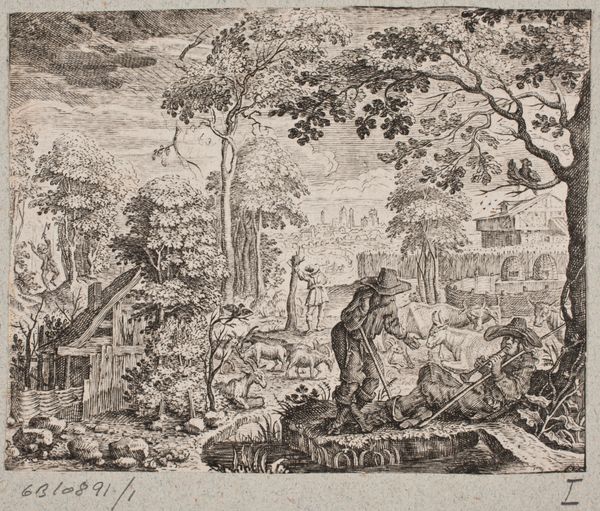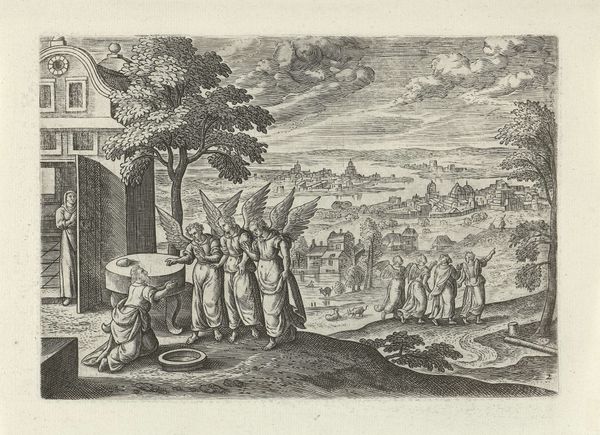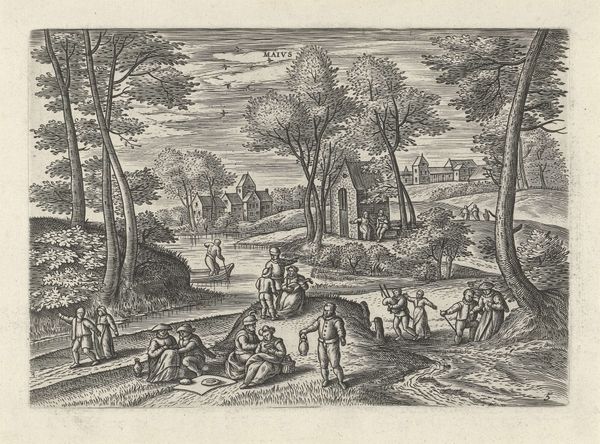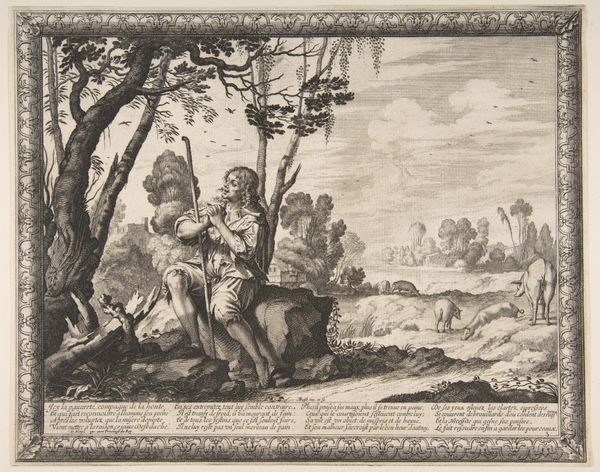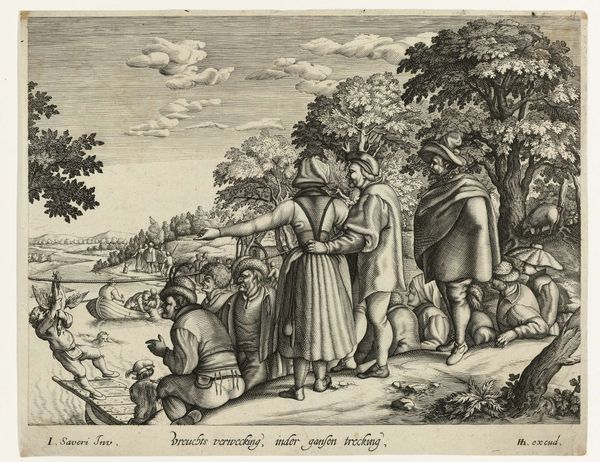![Illustration til Adam Olearius, “Persianischer Rosenthal von einem Sinnreichen Poeten Schich Saadi […]”, Schleswig 1660 by J. Muller](/_next/image?url=https%3A%2F%2Fd2w8kbdekdi1gv.cloudfront.net%2FeyJidWNrZXQiOiAiYXJ0ZXJhLWltYWdlcy1idWNrZXQiLCAia2V5IjogImFydHdvcmtzLzMzMmUxZTI2LWNhZDEtNDdjZC1iZjAxLTRiZDM4YjViMjRhNy8zMzJlMWUyNi1jYWQxLTQ3Y2QtYmYwMS00YmQzOGI1YjI0YTdfZnVsbC5qcGciLCAiZWRpdHMiOiB7InJlc2l6ZSI6IHsid2lkdGgiOiAxOTIwLCAiaGVpZ2h0IjogMTkyMCwgImZpdCI6ICJpbnNpZGUifX19&w=3840&q=75)
Illustration til Adam Olearius, “Persianischer Rosenthal von einem Sinnreichen Poeten Schich Saadi […]”, Schleswig 1660 1660
0:00
0:00
print, etching
#
baroque
# print
#
etching
#
landscape
#
genre-painting
#
history-painting
Dimensions: 104 mm (height) x 129 mm (width) (bladmaal)
This illustration by J. Muller, made in Schleswig in 1660, visualizes a scene from Adam Olearius’s “Persianischer Rosenthal.” Note the figure of the shepherd, staff in hand, guiding his flock through a pastoral landscape. The shepherd, a motif stretching back to antiquity, symbolizes guidance, protection, and care. We see echoes of this figure in the Good Shepherd of early Christian art, who carries the lost lamb, or even further back in Greco-Roman depictions of pastoral life, where shepherds embody an idealized, simple existence. This figure is not static; its meaning evolves. The staff itself, beyond its practical use, becomes a symbol of authority and leadership, echoing the scepter of kings or the bishop's crosier. The psychological weight of this image lies in its appeal to our deep-seated need for guidance and security. The shepherd represents an archetype of the benevolent leader, engaging viewers on a subconscious level. Thus, the shepherd and his staff are not merely figures in a landscape, but carriers of cultural memory. Their appearance here is a testament to the cyclical nature of symbols, resurfacing and adapting across time, enriched by each new context.
Comments
No comments
Be the first to comment and join the conversation on the ultimate creative platform.
